Sabudana called as sago or tapioca pearls are often consumed during fasting or vrat. Basically these are small white pearls made from tapioca flour starch.
Even thought the preparation of sabudana tikki looks similar to that of Sabudana Vada, some of the ingredients included in the tikki are unique and different. Unlike a sabudana vada which has a good amount of peanuts, sabudana tikki has a few cashews and raisins added to it. Dry mango powder is added here instead of lemon juice to give a slight tang to the patties.
Sabudana tikki is a North Indian style recipe and Sabudana Vada is a delicacy from the Maharashtrian cuisine. Moreover sabudana vada are deep fried and these sago tikkis are pan-fried with a few tablespoons of oil.
Serve sabudana cutlet with a satvik coconut chutney or a homemade tomato ketchup made without preservatives or a satvik coriander chutney or mint chutney.
With sabudana, I make some more fasting recipes like:
Sabudana KhichdiSabudana KheerSabudana PakodaSabudana Thalipeeth
How to make Sabudana Tikki
Soaking Sabudana
- Rinse and then soak ½ cup sabudana pearls in water covering them above from 1 to 2 inches, for 5 to 6 hours or overnight. Depending on the quality of sabudana you can even soak for 2 to 3 hours. When properly soaked, the sago pearls, will get mashed easily when pressed. If you feel some hardness in the center, then soak for some more time.
- Then drain the soaked sago pearls very well in a strainer.
Cooking and Mashing Potatoes
- Boil or steam 1 large potato in a stove-top pressure cooker, steamer, Instant Pot or microwave oven. The potato has to be softened and well cooked. Drain all the water from the boiled potato. Add water as needed when steaming or boiling the potatoes using any cooking method that you follow – in a pan, instant pot or stove-top pressure cooker. Note that the water has to be drained thoroughly before you begin to peel and mash the potato. Any water logging in the potato, will make the tikki mixture moist or pasty.
- When the potato is slightly hot or warm, peel and mash it with a fork or a vegetable masher very well in a bowl. Let the mashed potato become lukewarm or cool completely at room temperature before you begin adding the remaining ingredients to it.
- Now add the following ingredients. You can also use roasted and slightly crushed peanuts instead of cashews.
the sabudana pearls that have been drained of all the water½ teaspoon chopped green chillies10 to 12 cashews (chopped) or 4 tablespoons chopped cashews½ tablespoon chopped raisins ½ teaspoon cumin powder¼ teaspoon dry mango powder (amchur powder) or add as per tasteedible rock salt (sendha namak) as required
- Mix very well. I was very sure that the tikkis will not break while frying. This recipe works. But if you are in doubt, you can add 1 tablespoon of arrowroot flour or water chestnut flour or buckwheat flour.
Making Sabudana Tikki
- Then form flat patties from the mixture. Keep the width of the patties to ⅓ inch as when cooking they cook quickly from outside. If you make thick sabudana tikki, then the outsides become golden, but the center will feel raw. We need to keep the thickness of the patties thin as we are pan-frying them and not deep frying.
- Heat 2 tablespoon peanut oil in a frying pan or skillet. Place 4 to 5 sabudana tikki in the pan and fry on medium heat. You can also use ghee (clarified butter) to pan-fry.
- When the base is lightly browned, flip using a spatula and pan-fry the other side. If needed you can add 1 to 2 tablespoons more oil.
- Flip again when the second side is golden. Flip a couple of times more, until the sabudana cutlets are crisp and golden from both sides.
- Place the pan-fried sabudana tikki on kitchen paper towels to remove any extra oil.
- Fry the remaining batches in the same way add 1 to 2 tablespoons oil or as needed. The recipe makes for 8 sabudana cutlet. Serve sabudana tikki hot or warm with a satvik coconut chutney or homemade tomato sauce made without preservatives or coriander chutney or mint chutney. If you are looking for more Navratri recipes then do check:
Aloo tamatar sabziBuckwheat khichdiMakhana recipeKuttu pakora
Please be sure to rate the recipe in the recipe card or leave a comment below if you have made it. For more vegetarian inspirations, Sign Up for my emails or follow me on Instagram, Youtube, Facebook, Pinterest or Twitter. This Sabudana Tikki recipe post from the blog archives (first published in December 2015) has been updated and republished on 30 June 2021.
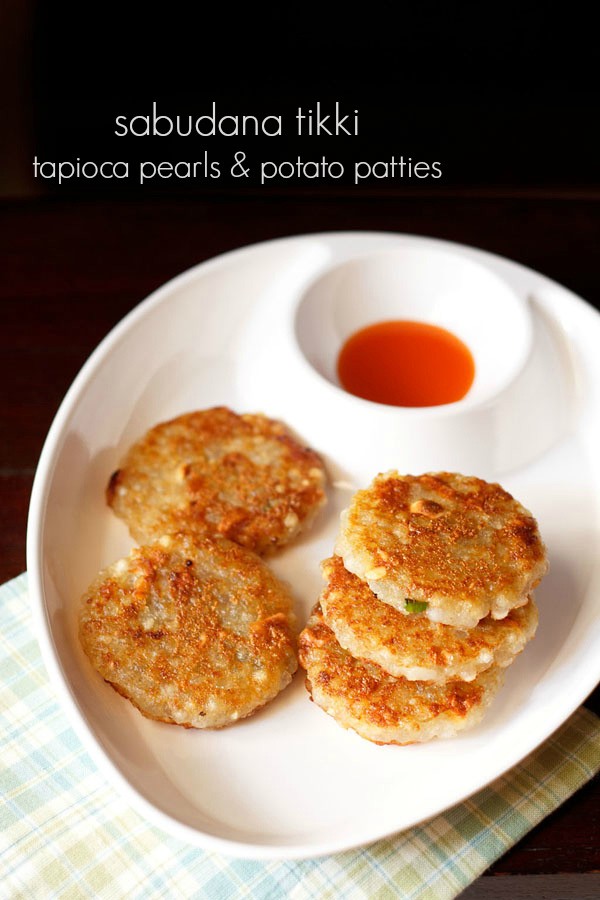
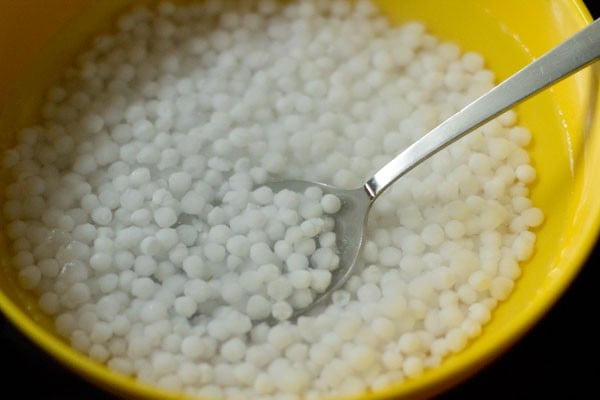
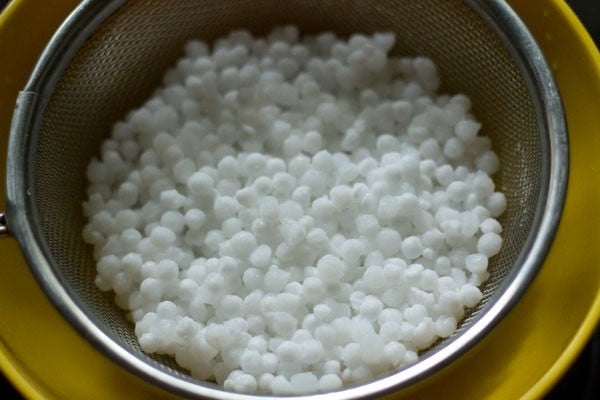
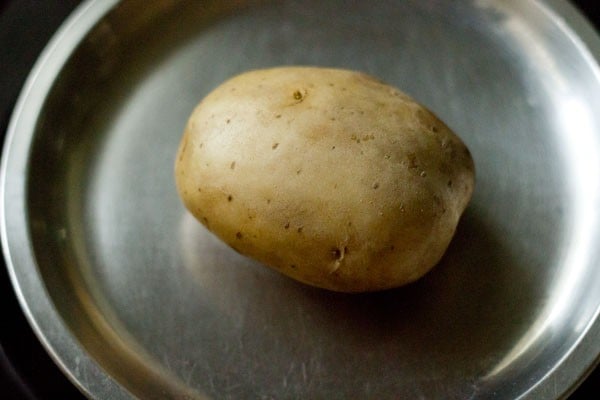
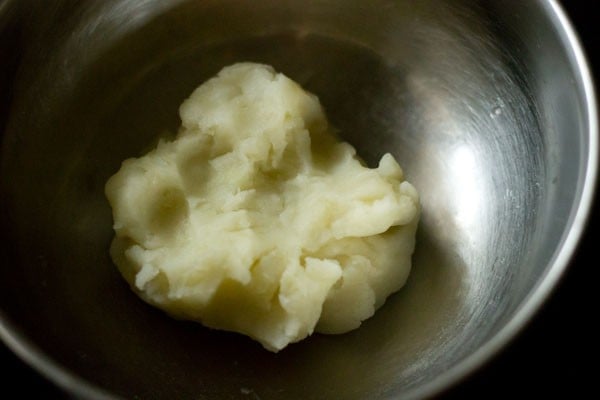
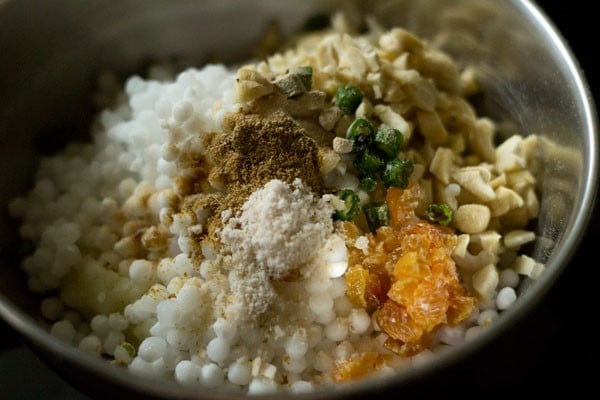
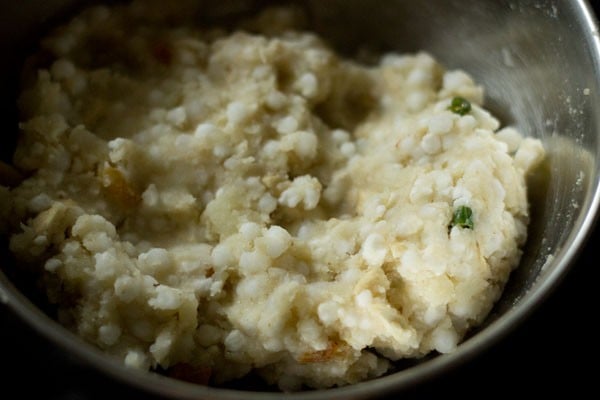
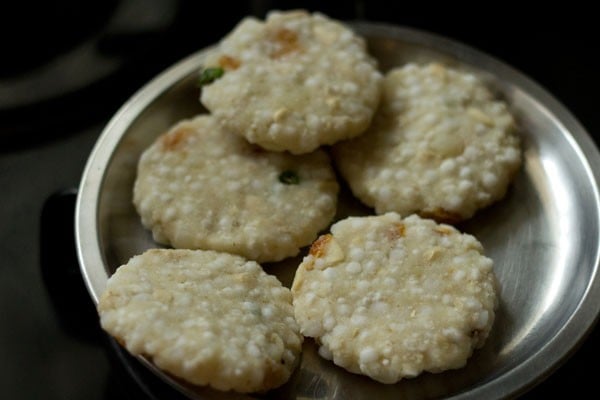
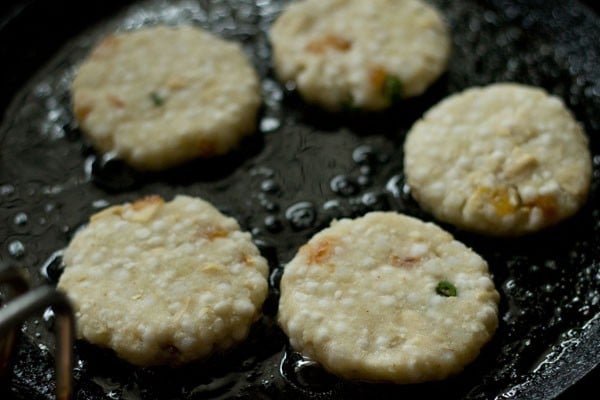

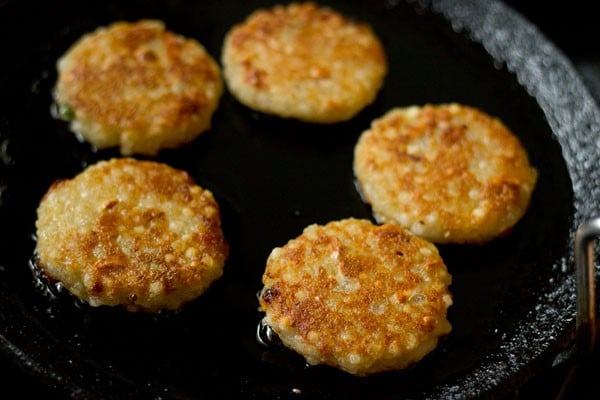
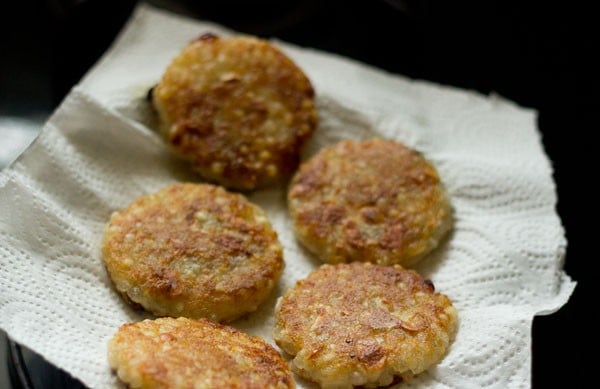
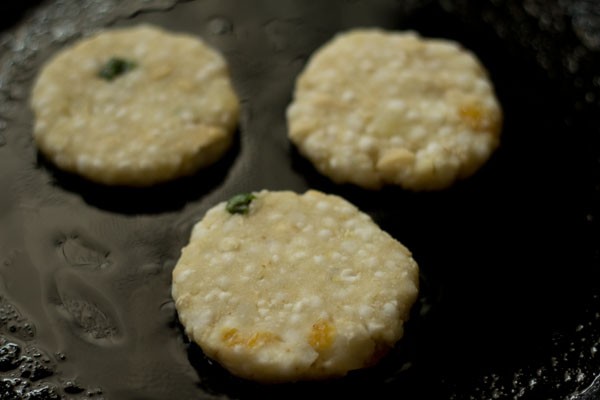


title: “Sabudana Tikki Sabudana Cutlet For Fasting " ShowToc: true date: “2024-10-27” author: “Patricia Hahn”
Sabudana called as sago or tapioca pearls are often consumed during fasting or vrat. Basically these are small white pearls made from tapioca flour starch.
Even thought the preparation of sabudana tikki looks similar to that of Sabudana Vada, some of the ingredients included in the tikki are unique and different. Unlike a sabudana vada which has a good amount of peanuts, sabudana tikki has a few cashews and raisins added to it. Dry mango powder is added here instead of lemon juice to give a slight tang to the patties.
Sabudana tikki is a North Indian style recipe and Sabudana Vada is a delicacy from the Maharashtrian cuisine. Moreover sabudana vada are deep fried and these sago tikkis are pan-fried with a few tablespoons of oil.
Serve sabudana cutlet with a satvik coconut chutney or a homemade tomato ketchup made without preservatives or a satvik coriander chutney or mint chutney.
With sabudana, I make some more fasting recipes like:
Sabudana KhichdiSabudana KheerSabudana PakodaSabudana Thalipeeth
How to make Sabudana Tikki
Soaking Sabudana
- Rinse and then soak ½ cup sabudana pearls in water covering them above from 1 to 2 inches, for 5 to 6 hours or overnight. Depending on the quality of sabudana you can even soak for 2 to 3 hours. When properly soaked, the sago pearls, will get mashed easily when pressed. If you feel some hardness in the center, then soak for some more time.
- Then drain the soaked sago pearls very well in a strainer.
Cooking and Mashing Potatoes
- Boil or steam 1 large potato in a stove-top pressure cooker, steamer, Instant Pot or microwave oven. The potato has to be softened and well cooked. Drain all the water from the boiled potato. Add water as needed when steaming or boiling the potatoes using any cooking method that you follow – in a pan, instant pot or stove-top pressure cooker. Note that the water has to be drained thoroughly before you begin to peel and mash the potato. Any water logging in the potato, will make the tikki mixture moist or pasty.
- When the potato is slightly hot or warm, peel and mash it with a fork or a vegetable masher very well in a bowl. Let the mashed potato become lukewarm or cool completely at room temperature before you begin adding the remaining ingredients to it.
- Now add the following ingredients. You can also use roasted and slightly crushed peanuts instead of cashews.
the sabudana pearls that have been drained of all the water½ teaspoon chopped green chillies10 to 12 cashews (chopped) or 4 tablespoons chopped cashews½ tablespoon chopped raisins ½ teaspoon cumin powder¼ teaspoon dry mango powder (amchur powder) or add as per tasteedible rock salt (sendha namak) as required
- Mix very well. I was very sure that the tikkis will not break while frying. This recipe works. But if you are in doubt, you can add 1 tablespoon of arrowroot flour or water chestnut flour or buckwheat flour.
Making Sabudana Tikki
- Then form flat patties from the mixture. Keep the width of the patties to ⅓ inch as when cooking they cook quickly from outside. If you make thick sabudana tikki, then the outsides become golden, but the center will feel raw. We need to keep the thickness of the patties thin as we are pan-frying them and not deep frying.
- Heat 2 tablespoon peanut oil in a frying pan or skillet. Place 4 to 5 sabudana tikki in the pan and fry on medium heat. You can also use ghee (clarified butter) to pan-fry.
- When the base is lightly browned, flip using a spatula and pan-fry the other side. If needed you can add 1 to 2 tablespoons more oil.
- Flip again when the second side is golden. Flip a couple of times more, until the sabudana cutlets are crisp and golden from both sides.
- Place the pan-fried sabudana tikki on kitchen paper towels to remove any extra oil.
- Fry the remaining batches in the same way add 1 to 2 tablespoons oil or as needed. The recipe makes for 8 sabudana cutlet. Serve sabudana tikki hot or warm with a satvik coconut chutney or homemade tomato sauce made without preservatives or coriander chutney or mint chutney. If you are looking for more Navratri recipes then do check:
Aloo tamatar sabziBuckwheat khichdiMakhana recipeKuttu pakora
Please be sure to rate the recipe in the recipe card or leave a comment below if you have made it. For more vegetarian inspirations, Sign Up for my emails or follow me on Instagram, Youtube, Facebook, Pinterest or Twitter. This Sabudana Tikki recipe post from the blog archives (first published in December 2015) has been updated and republished on 30 June 2021.














